As I showed a taxi driver a picture of the Kashgar livestock market I found on the internet, I told him, “Wo yao chi zhe bian” (“I want to go here.”). The Uyghur-looking driver looked at me and replied back in Mandarin as we looked at each other, him in a questioning and I in a confused manner. Not that his heavy accent was deterring me from understanding what he said, it’s just that my Mandarin is absolutely dreadful and apart from being able to say certain things with enough confidence to deceive someone into believing I am a fluent speaker, I am no better than most non-Mandarin-speaking foreigners.
You see, the Kashgar livestock market doesn’t have a specific name or landmark near it which, if I mentioned to a taxi or bus driver, would immediately understand what I was referring to. (It was not until I got there later when I found out the perfect picture to show said taxi and bus drivers.) In addition, there are several locations around the city which also buy/sell livestock although most are on a much smaller scale than the one I intended to visit, the main one. All I knew was that it was in a location northwest of the the city. The written description provided to me by the hostel front desk didn’t help either as many taxi drivers in Kashgar were Uyghur and many that I flagged down couldn’t read Chinese characters. (This is allegedly one reason the CCP is sending Uyghurs to those infamous “reeducation” camps around Xinjiang.) I didn’t know where to get bus #13 or #23 nor did I know where I would have to get off if I did. When taking public transport in unfamiliar areas, it’s never as simple as “The stop is right outside the market. You can’t miss it!” Which is why taxi was the best option to get there but where is the fun if one can’t earn even a “straight-forward” taxi ride. But lucky me, after hailing down and speaking to a few drivers, I finally found one who immediately understood where I wanted to go so off we went. (I was looking at my GPS during my journey to ensure we were heading northwest of the city to confirm we were heading in the right direction and the right place.)
The driver dropped me off in front of what looked like an entrance. I walked in and saw several people selling fruits. I saw several animals here and there and I wondered, “Is this it? Not quite how I imagined it to be…” I saw a samsa vendor and as I hadn’t had breakfast, I bought one. I bit into it and my mouth was filled with gamey, fatty chunks of lamb. I saw many people walking in a general direction so I followed and that was when I was greeted with a sign that basically told me, “This is the place. You are now entering the actual livestock market.”
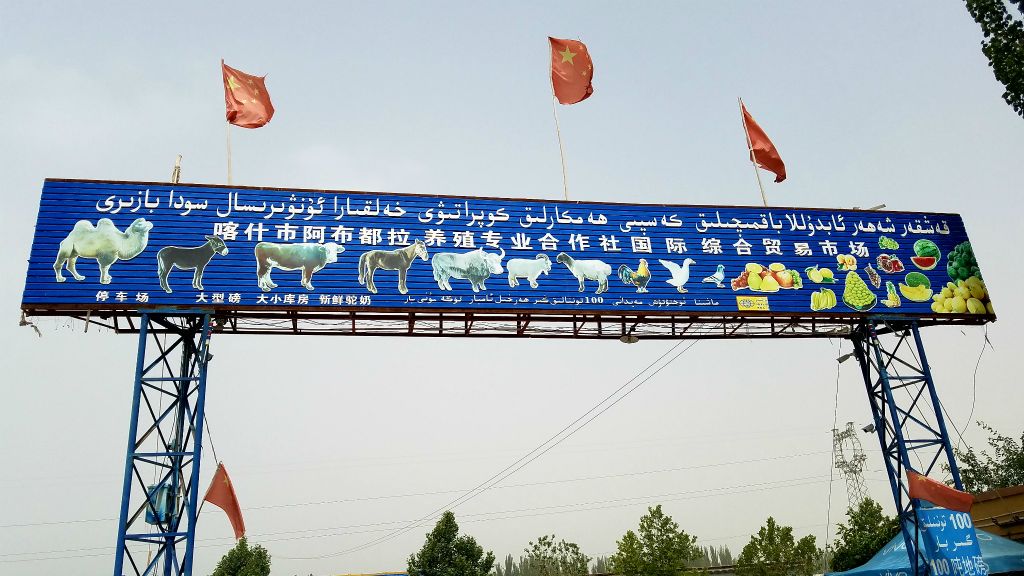
I’d never been to a livestock market before so nothing prepared me for this experience. The sights, the sounds, the smells; all of it just kinda hits you, like “WHAM!”. A sea of people (mainly Uyghur men) and livestock of all kinds (the sign above shows you all the livestock you can buy from the market), as far as the eye can see, got my pulse going. “Where do I even begin?” I asked myself.
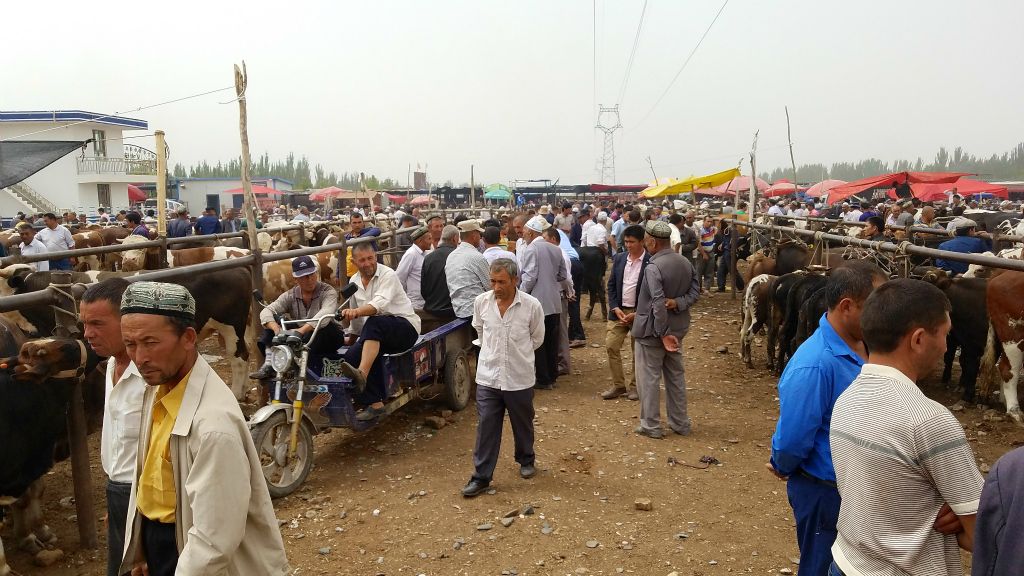
Animals ranging from cows/bulls to sheep to goats to camels were put on display and auctioned off. I didn’t know this at the time but according to http://www.silkroadtourcn.com, “The sellers and buyers never bargain with mouth, they hide their hands under cloth or in long sleeves and touch each other’s fingers to communicate the price. It is said this old tradition can date back to Qin dynasty of 2200 years ago when foreign traders took their animals to the market in Xianyang, who bargain with Chinese in this special way.”
Pictures are worth a thousand words so here are a few:
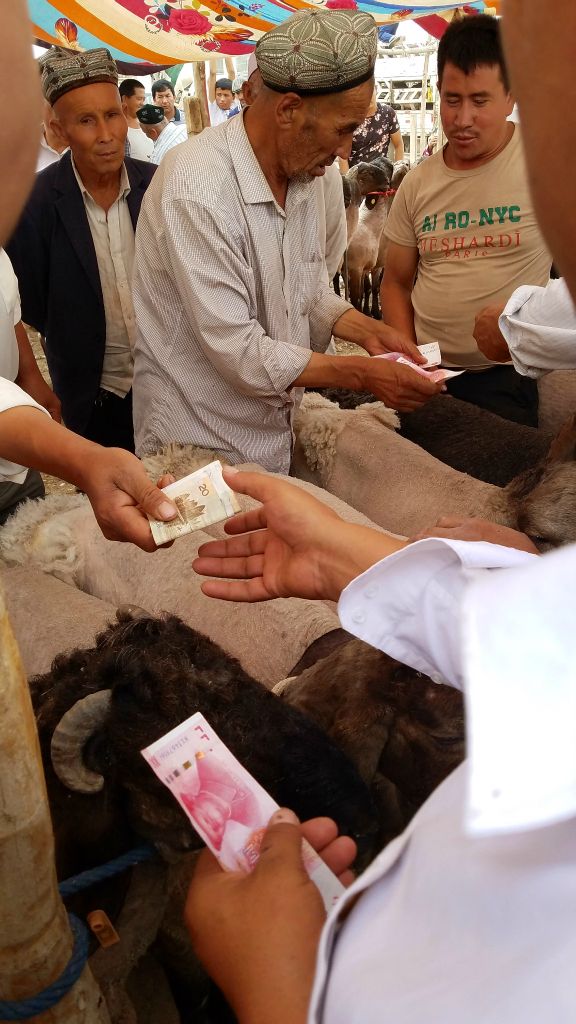
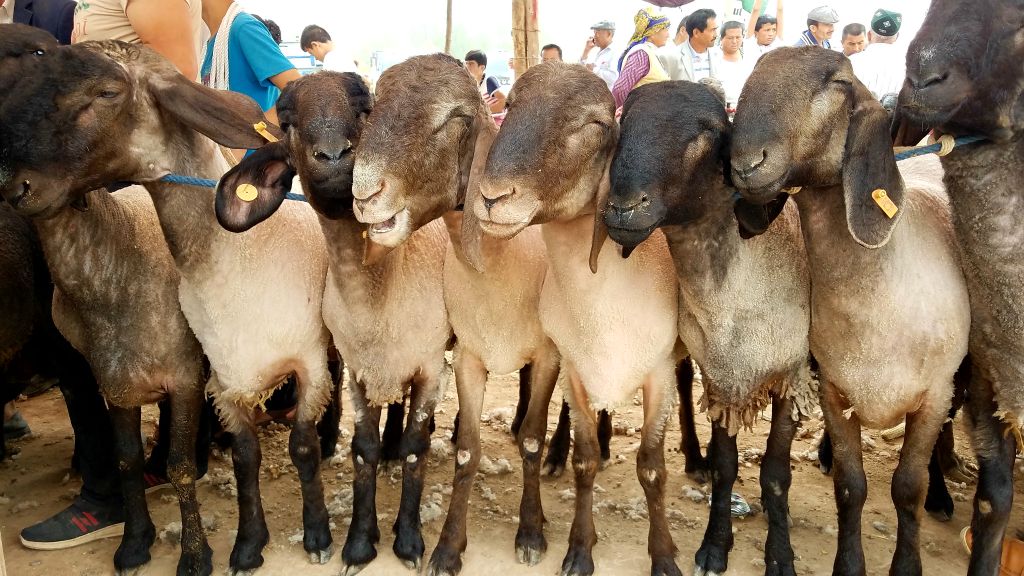
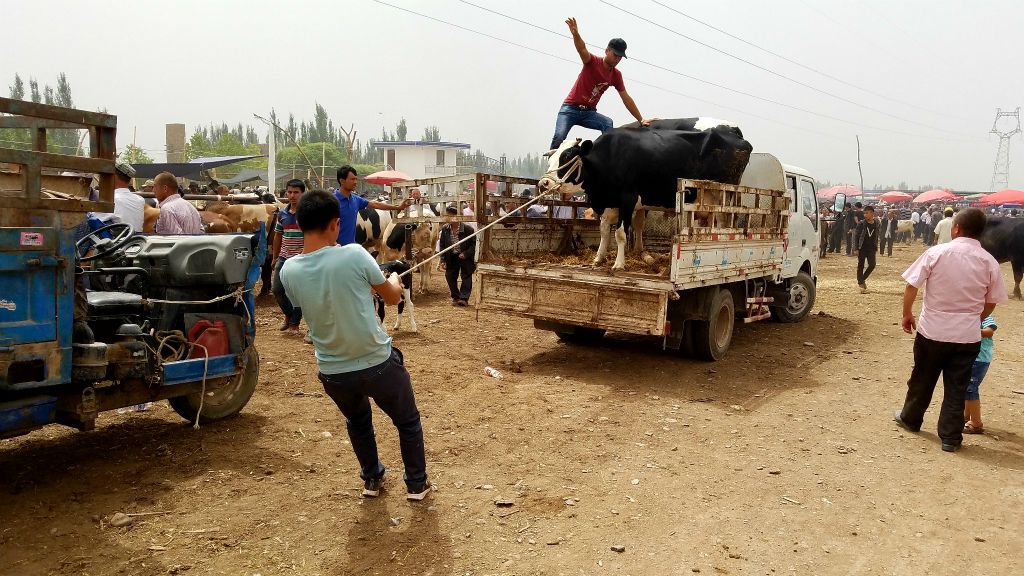
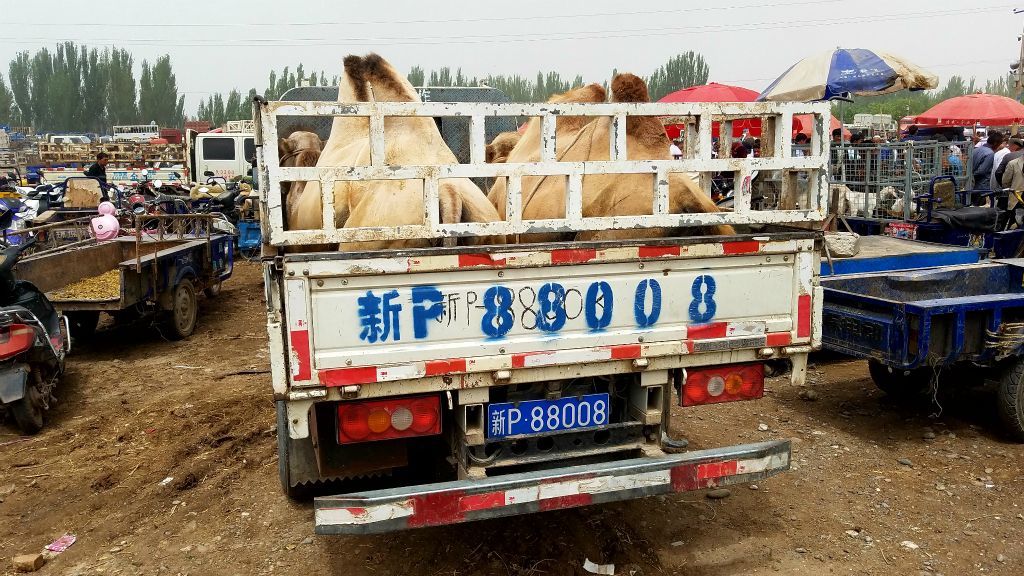
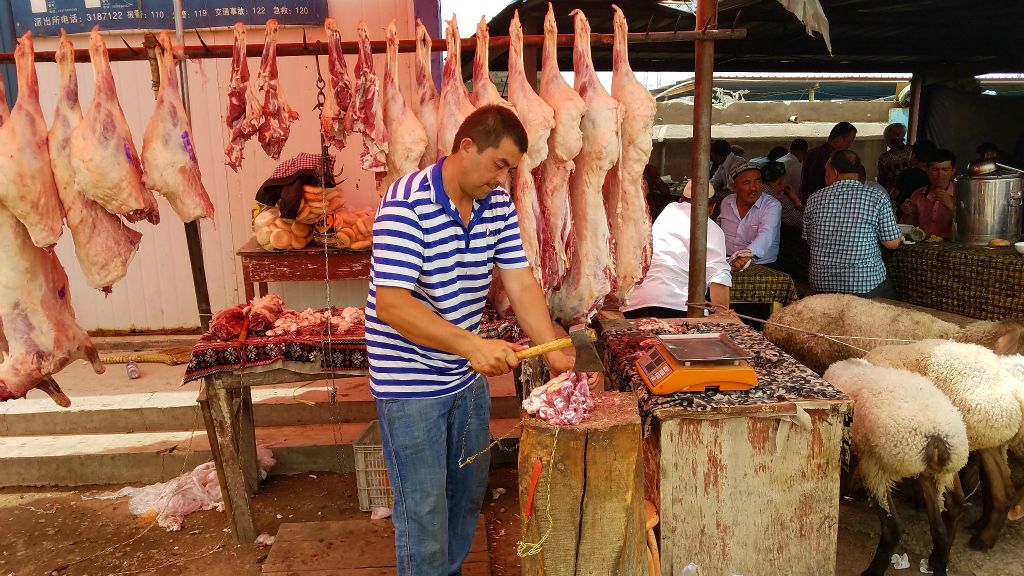
After spending a good hour wandering around, I was hungry so I visited one of many food stalls before following an ant-line of locals walking outside toward a road which had bus #23 to take them back to Kashgar.
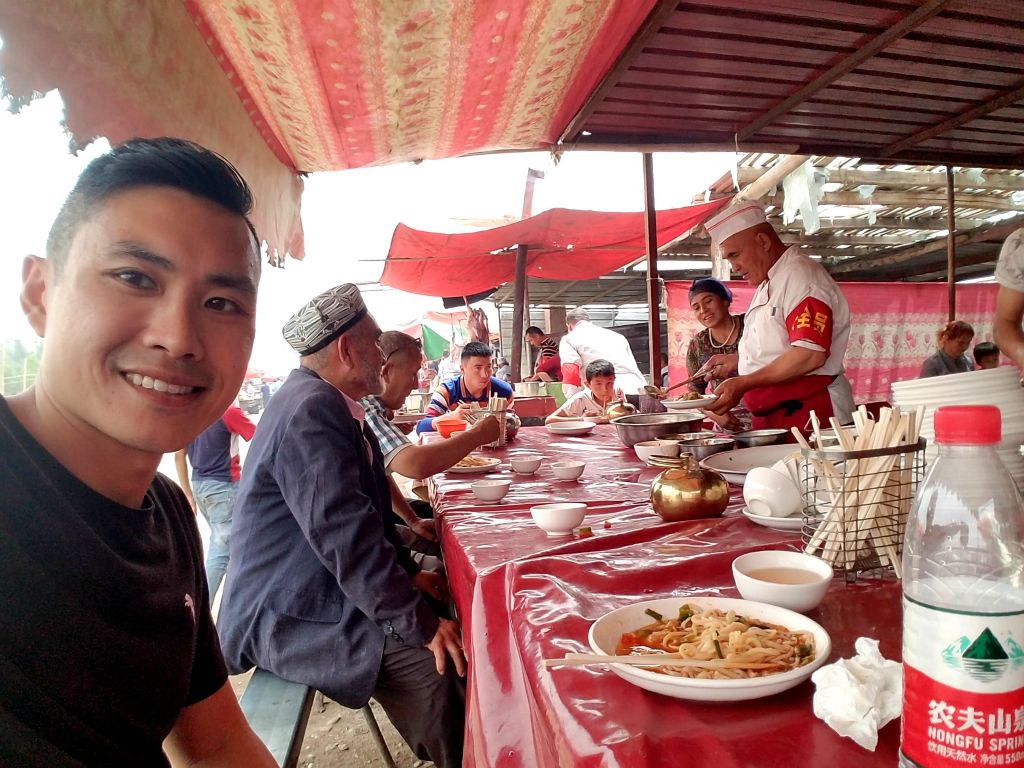
If you are interested to read more about the history of Kashgar’s livestock market, I found this website to be very informative. The pictures taken in 1995 are also very interesting as it provides a comparison to the pictures above.